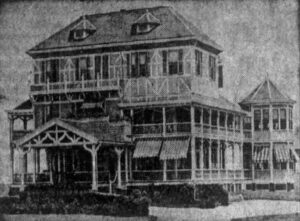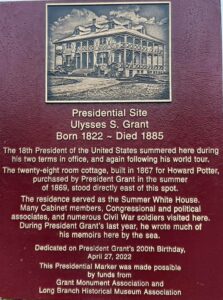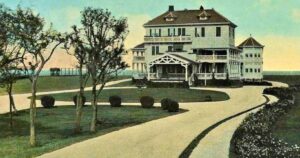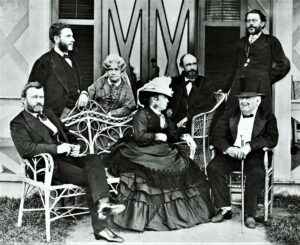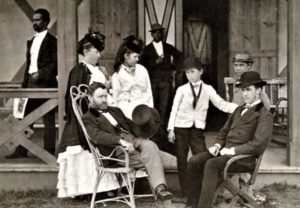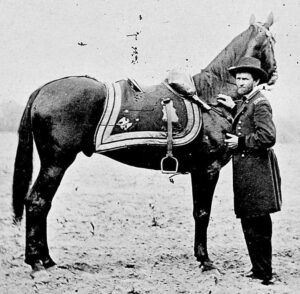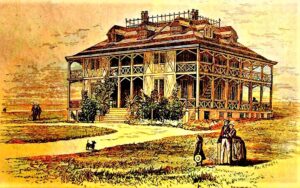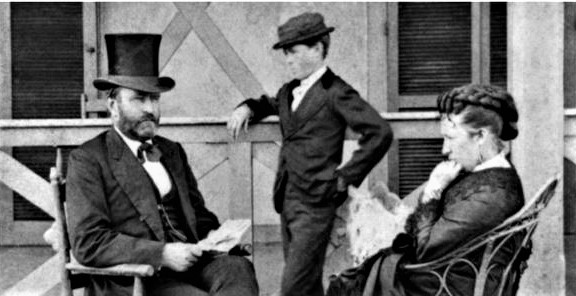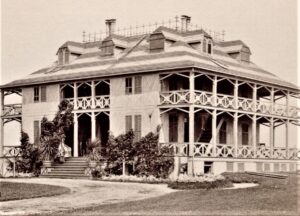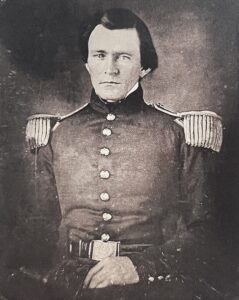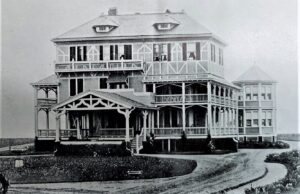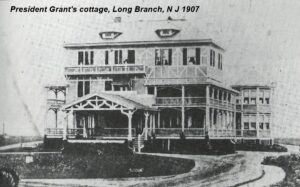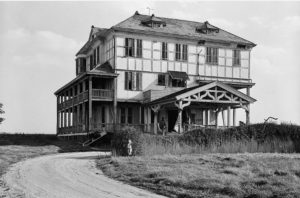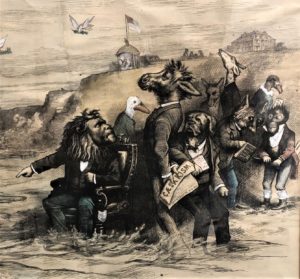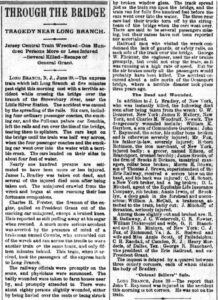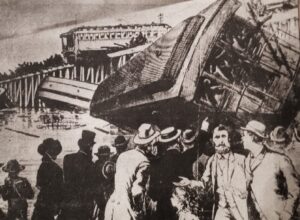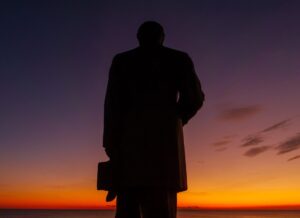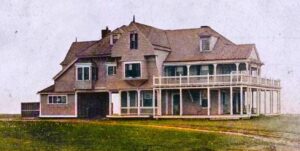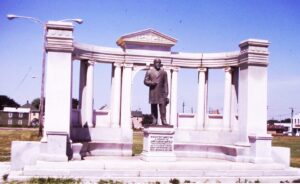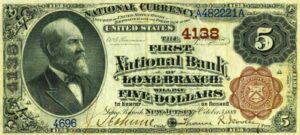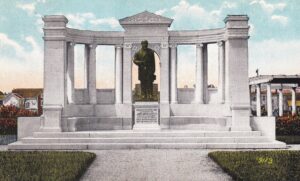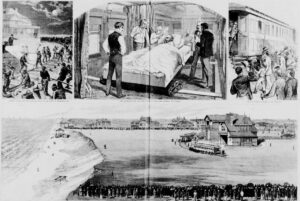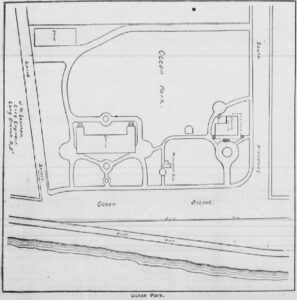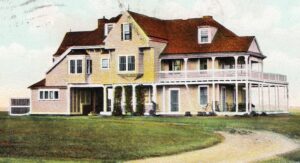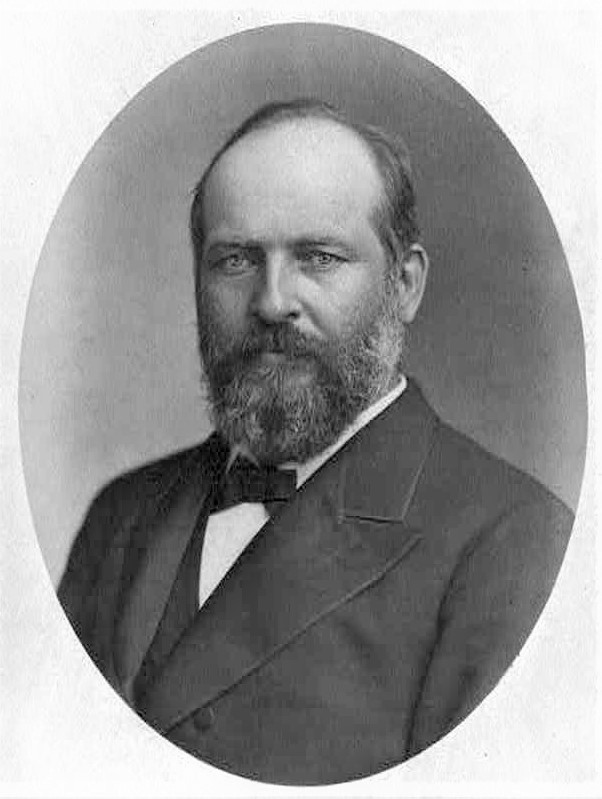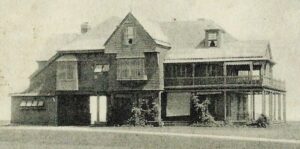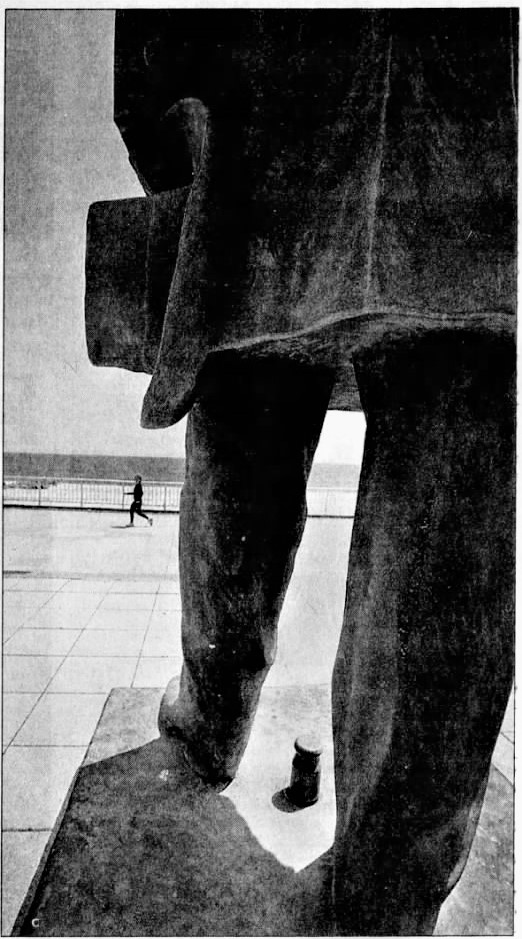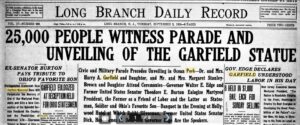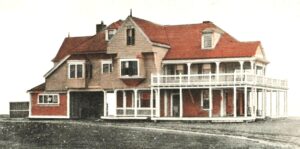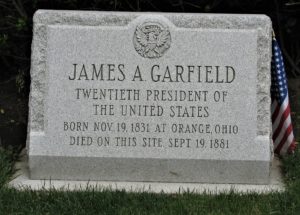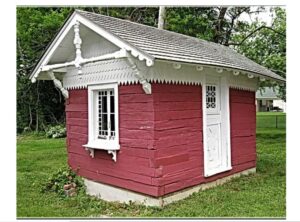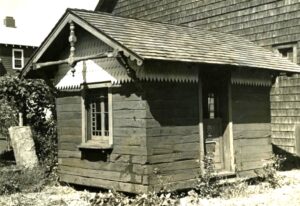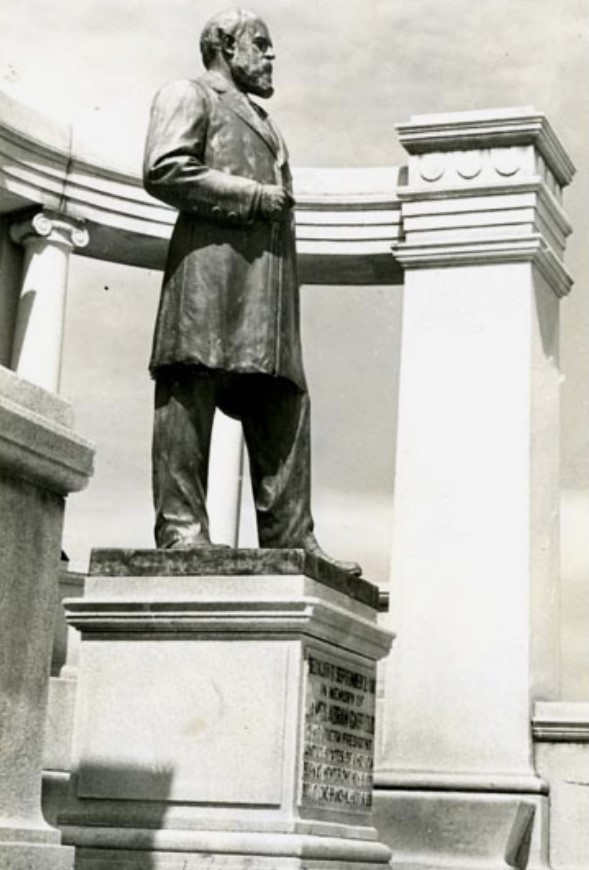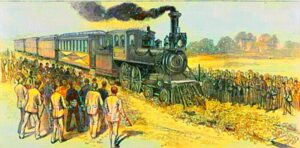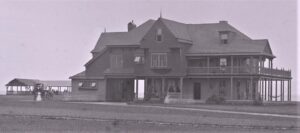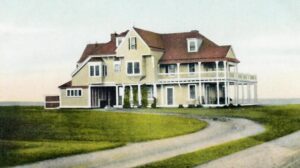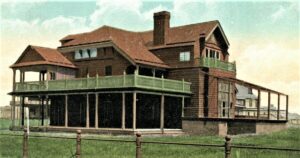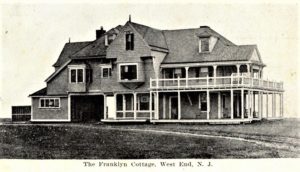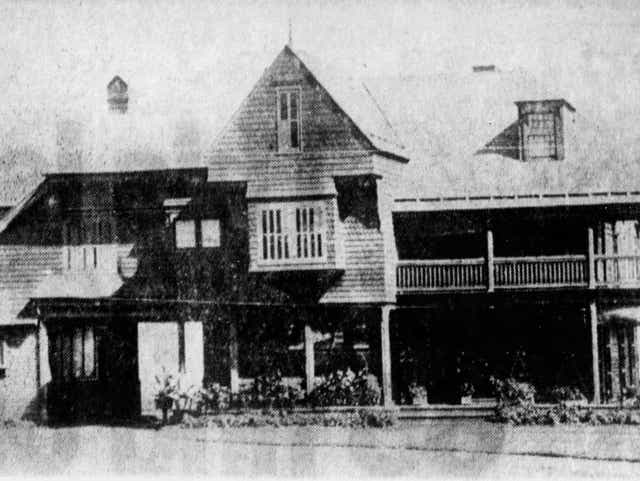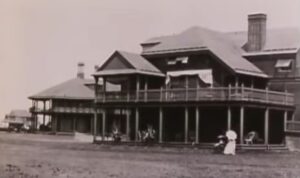Long Branch and the Presidency
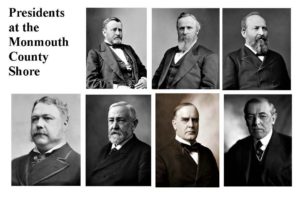
Executive Orders — The seven American Presidents to visit Long Branch (and their terms in office) are: Ulysses S. Grant (1869-1877) Rutherford B. Hayes (1877-1881), James A. Garfield (1881), Chester A. Arthur (1881-1885), Benjamin Harrison (1889-1893), William McKinley, Jr. (1897-1901), and T. Woodrow Wilson (1913-1921). Garfield died in Elberon from his assassination wounds.
* * * * *
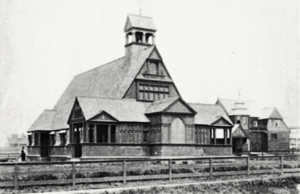
Have Faith — “Church of the Presidents,” early 1900s. All 7 American presidents who visited Long Branch also worshiped here in Elberon. Consecrated as the St. James Episcopal Chapel in June 1879, all religious services ended in 1953. Listed on the National Register of Historic Places in 1976, the building was saved from a wrecker’s ball in 1999 by the Long Branch Historical Museum membership (organized in 1953 by Edgar Dinkelspiel) — MORE INFO.
Although seven American chief executives have visited Long Branch — this 19th Century’s “Resort of Presidents” — but I only dug deep on two: Presidents Grant and Garfield:
Ulysses S. Grant: 18th American President
He was born on April 22, 1822 in Point Pleasant, Ohio, in a log cabin and very poor. As a young man Grant was an indifferent farmer, tanner and solider. Later on when he was the most famous man in the world, he would fall in love with Long Branch and spend every summer of his presidency there with his family. His presence would make Long Branch the nation’s first and favorite summer resort.
A natural leader, before Grant even won the Presidency he was the Commanding General of the Union Army that won the Civil War in 1865. The Republican Grant was elected President of the United States in 1868, defeating Democrat Horatio Seymour (a former governor of New York) with nearly 53% of the popular vote and a 214-80 Electoral College margin. Grant lost New Jersey in that race by about 2,800 votes. In 1872, he was easily re-elected over Horace Greeley (founder of the New-York Tribune) with nearly 56% of the popular vote and a 286-66 Electoral College blowout. That race he carried New Jersey with over 15,000 votes.
“I have never seen a place in all my travels better suited for a summer residence.”
—President Grant on Long Branch
Grant was quite the complicated fellow even for his day. He was personally very honest, yet his administration was one of the most corrupt in history. He fainted at the sight of blood, yet he planned and engaged in some of the most lethal battles in military history. He had a serious drinking problem, and yet remained a steady and expert horseman all his life.
A man of simple pleasures, during his time when Long Branch was the “Summer Capitol,” the president liked to rise each morning shortly after dawn and ride his two-horse buckboard quickly along the oceanfront — sometimes for up to 20 miles.
Henry Van Brunt, “bathmaster” at the Mansion House hotel (he’d taught the Lincoln boys to swim during their 1861 visit), was a presidential buddy during these Long Branch times. So trusted was Van Brunt that he would drop all his duties to serve the president — mixing his drinks, carving his meat and exchanging stories.
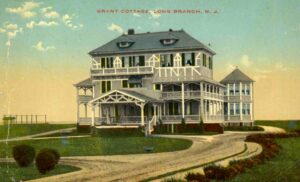
Summer White House — President US Grant’s Cottage, 1914. Wealthy benefactors paid $32,000 for the house and gifted it to Grant and his family. The president of the United States of America became a official Long Branch resident in February 1870. At the time Grant was regarded as “the greatest man living.”
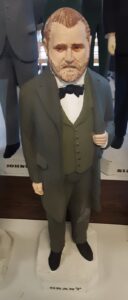
President Grant statue at Long Branch City Hall on Broadway (L. Francis Bonello Exhibit), 2022. The sons of Bonello (Francis, John and Richard) donated the display in 1976.
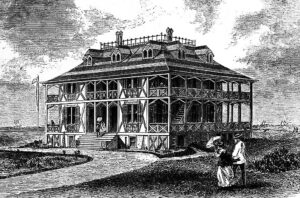
Grant Cottage, August 1870. George W. Childs, a wealthy Philadelphia newspaper man and friend of the president, owned a nearby cottage. He led the effort to get Grant in Long Branch.
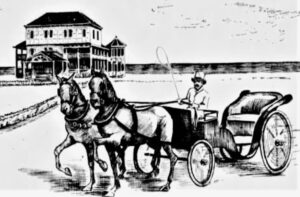
House & Horses — President Grant with his favorite horse team: “Egypt and Cincinnati.” The two old warhorses (both Kentucky thoroughbreds) were honored and well-cared-for in retirement at Long Branch.
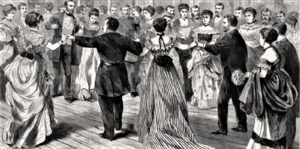
President Grant dances at the Grand Ball given in his honor at the Stetson House hotel, July 1869. Civil War Generals Phil Sheridan and Bill Sherman were among the 400 guests. (C.G. Bush Drawing). It was called “the most distinguished company ever gathered at The Branch.”
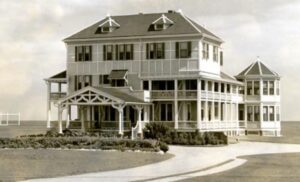
Grant Cottage, early 1900s. Grant’s presence would catapult Long Branch into national prominence — making it the “Summer Capitol.”
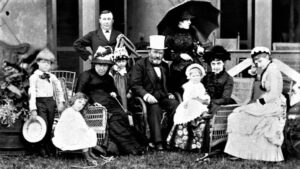
President Grant with family at Long Branch, 1883. An all-too-close observer of Civil War carnage, Grant found “peace and relaxation” at the shore.
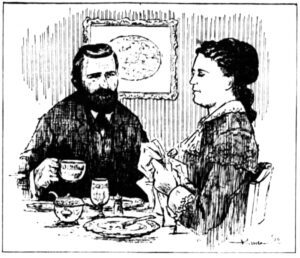
Grants dine at their Long Branch home in the 1870s, March 1970. Among the president’s favorite meals were: fried apples and bacon, roast beef (very well done), soft-shelled crabs and bluefish, and rice pudding.

Commanding General US Grant, 1865. For all the blood on his hands, there’s something gentle in his eyes.
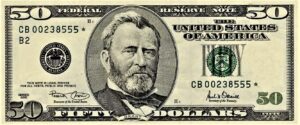
Dead President — US Grant’s face first landed on the $50 bill in 1913. Featured on the fifty before Grant were: Alexander Hamilton, George Washington, Henry Clay, and Benjamin Franklin.

President Grant portrait donated to Long Branch by his grandson, General US Grant, III. The son of Frederick Grant, he graduated from West Point with Douglas MacArthur in 1903. He died in 1968.

President Grant with his wife, Julia, and his father-in-law, Frederick Dent, at the Long Branch cottage, 1872.
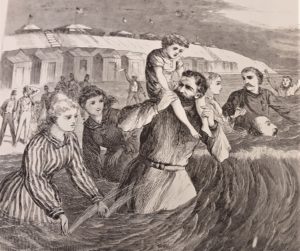
The president certainly loved the beach — seen here with his family in Long Branch surf, August 1869.
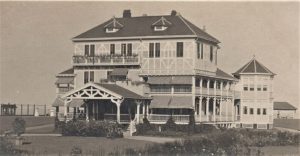
President Grant cottage, early 1900s. “A mixture of English villa and Swiss chalet,” according to the New York Tribune.
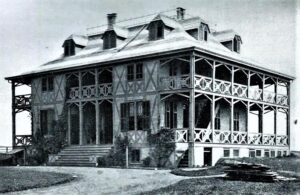
President Grant’s cottage, 1870. The “Summer White House” where the president enjoyed smoking cigars and drinking whiskey from his porch.
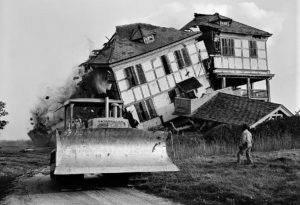
Grant Cottage being razed, 1963. D’Orsi & D’Orsi were the wreckers. “Once a symbol of elegance” — gone.
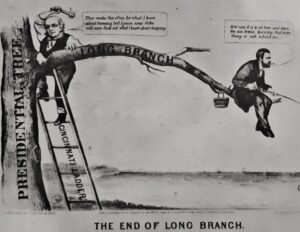
New-York Tribune cartoon on President Grant and Long Branch, 1870s. The “cares and intrigues of Washington distressed him deeply, ” according to the Long Branch Daily Record.
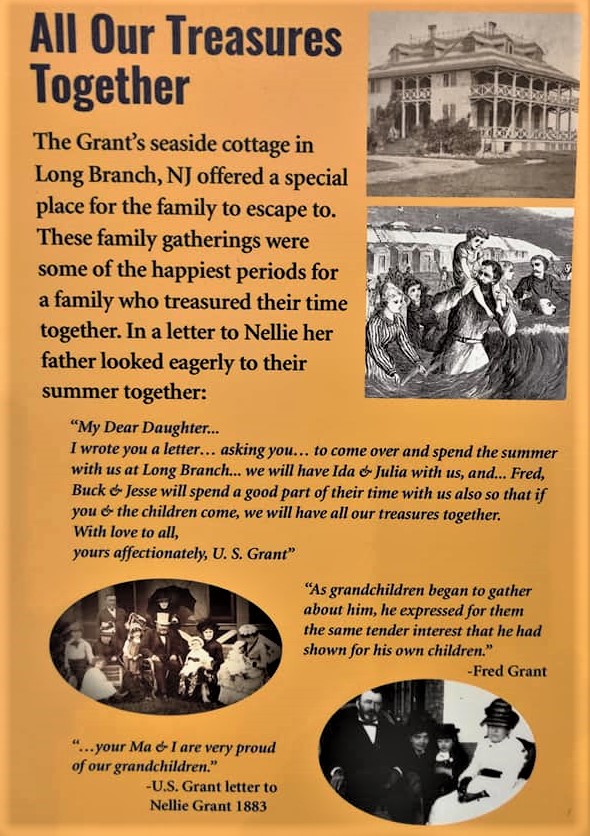
US Grant and family — treasured times in Long Branch. From the Ulysses S. Grant Cottage National Historic Landmark. (Beth Woolley Photo).
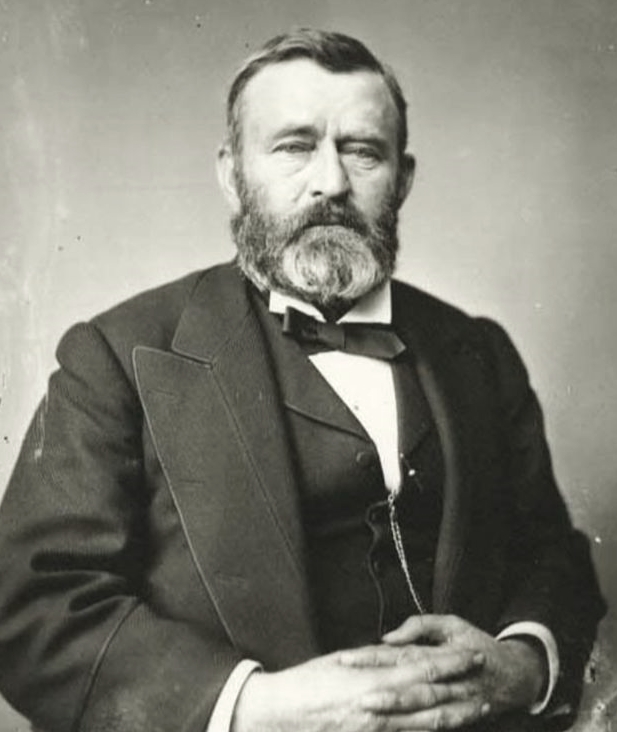
US Grant in his last years, 1880s. He didn’t like Washington, DC life: “I never wanted to get out of a place as much as I did to get out of the presidency.” — US Grant.
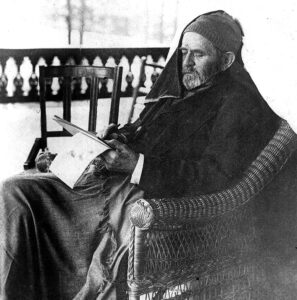
US Grant works on his memoirs in Mount McGregor, NY, June 1885. The former US president and Union general — riddled with cancer at the time — finished writing less than a week before his death. His two-volume “Personal Memoirs of U. S. Grant” was a best-seller and secured his family’s future.
Ulysses S. Grant Information Center — HERE
James A. Garfield: 20th American President
Born on November 19, 1831, on a farm in Cuyahoga County, Ohio, Garfield was the last president to be born in a log cabin.
The product of extreme poverty but with a first-rate mind and drive to succeed, Garfield went on to build one of the more impressive pre-president resumes in American history: lawyer, professor of ancient languages, ordained minister, president of Hiram College, Ohio state senator, Civil War major general, and eight-term US Representative.
“I have always felt the ocean was my friend and the sight of it brings rest and peace.”
—President Garfield on Long Branch
Garfield won the 1880 US presidential election by defeating Winfield Scott Hancock, the Sandy Hook fort namesake and heroic Civil War general. The Republican Garfield topped the Democrat Hancock by fewer than 10,000 votes out more than 9.2 million cast nationally. He captured the Electoral College by 214-155. In winning the presidency, Garfield lost New Jersey by about 2,000 votes.
He served less than 4 months as president before the assassination attempt by Charles Guiteau on July 2, 1881 at the Baltimore & Potomac Railroad Station in Washington, DC (the president was unguarded). After languishing in hot, humid Washington for two months, the president was moved to Long Branch with hopes the shore conditions would aid his recovery. After briefly improving, the president died in Elberon on September 19, 1881. The most likely cause of death was infection, not a bullet wound. The president with so much promise was dead at just 49.
In September 1918 the President James A. Garfield Monument — after a decade of delays — was unveiled in Ocean Park and moved to its current location in 1989.

Presentable President — James Garfield monument gets its first-ever professional cleaning by the Schavlay Statue Cleaning Company. Long Branch Daily Record, August 1967. The Ocean Avenue statute was dedicated in 1918.
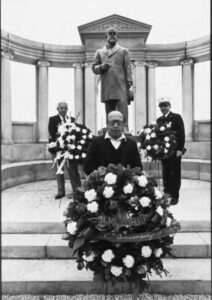
A Century Ago — Long Branch Mayor Henry Cioffi commemorates the 100th anniversary of President Garfield’s death. Red Bank Register, January 1981.
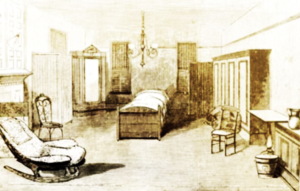
Sad Surroundings — Sketch of the Franklyn Cottage room where President Garfield died at Elberon in Summer 1881 (NJ State Archives Photo).
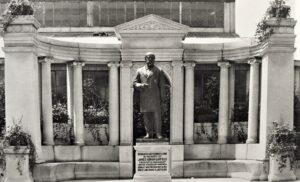
President Garfield statue and memorial park, 1950s. It stood near Long Branch Stadium for many years.
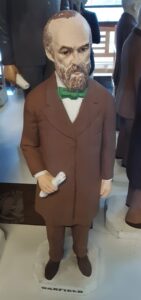
President Garfield statue at Long Branch City Hall (L. Francis Bonello Exhibit), 2022. The 2-foot-high, hand-painted plaster statue was donated to the city in 1976. A city native and MMC construction superintendent, Bonello died in 1972.
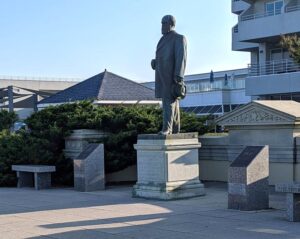
Shadows of Sadness — President James Garfield monument on the Long Branch Promenade, June 2023 (Jim Clarity Photo). The nation’s 20th President died in Long Branch in 1881.
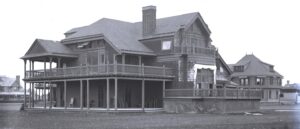
Franklyn Cottage in Elberon, August 1885. Where the president died — the house outlived him by about 40 years.
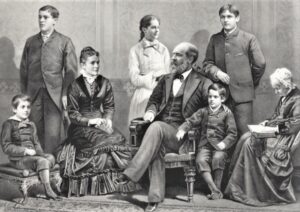
President Garfield and family, 1881. It took 36 ballots before the Republican Party convention decided on Garfield as their presidential nominee in 1880.
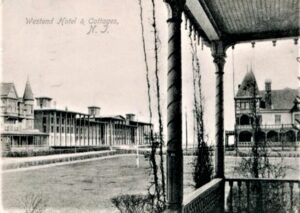
Photo taken by Mrs. Lucretia Garfield at Long Branch a few days before her husband was shot, June 1881. The president called her “Crete” — she outlived him by nearly 36 years.
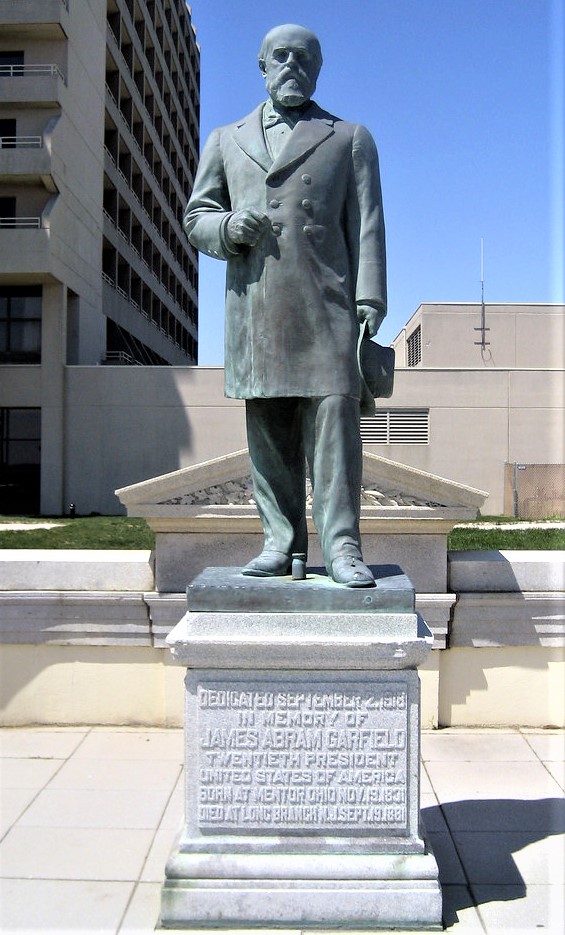
President Garfield’s statue by the sea. Dedicated in September 1918 in Ocean Park on Ocean Avenue (later called Garfield Park). Festivities included a parade of several thousand. A son of the slain president represented the family: Harry Garfield, who as a 17-year-old had witnessed his father’s shooting in Washington, DC. Brilliant like his dad, Harry went on to become president of Williams College (his father-president’s alma mater).
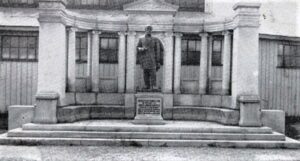
President Garfield’s monument in the park, 1954. The structure measures 28-feet across, 16-feet high and weighs 50 tons. The cost was $10,000.
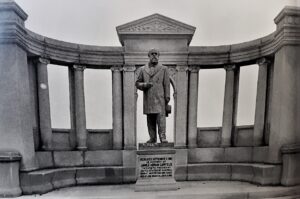
President Garfield statue and memorial park, 1960s. The 7-foot bronze statue was sculpted by Carl Schweizer. It remained in Garfield Park until 1989 when it was moved to its current location on the promenade by the Ocean Place Hotel.
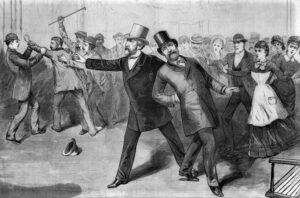
Scene of the Crime — President Garfield is shot by Charles Guiteau at the Washington, DC railroad station, July 1881. The nation’s leader would died in Long Branch two months later.
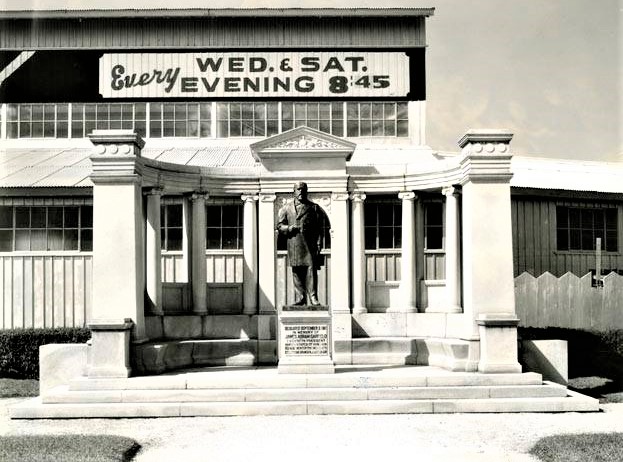
President Garfield statue in front of the old Long Branch Stadium, 1930s. Thomas Manson & Sons of Red Bank built the monument in 1918.
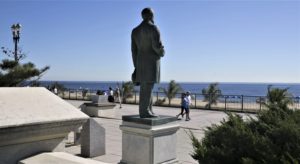
President Garfield statue watches over the city oceanfront promenade, 2019. It was moved to its present site in 1989 at a cost of $8,400. Technically on the grounds of a private hotel, the land was once the seven-acre oceanfront Garfield Park and before that, Ocean Park.
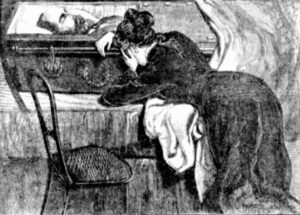
Mrs. Garfield’s “lonely devotions” over her dead husband, the President of the United States, September 1881
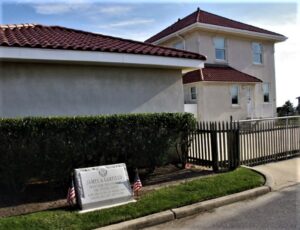
President Garfield granite marker at his death spot in Elberon, 2010s. The tablet was placed there in 1959.
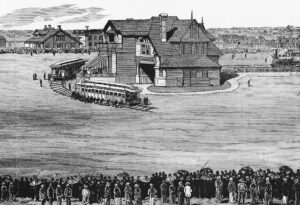
Railroad spur line transporting the ailing president from Elberon train station to Francklyn cottage is completed. Legions watch as the wounded president arrived, September 1881.
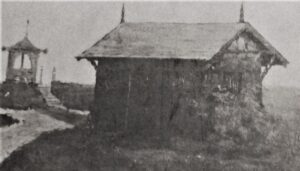
Garfield Tea House or Hut on Oliver Byron property (1882-1910). Built from the railroad ties used to move the president from train station to the house where he died.
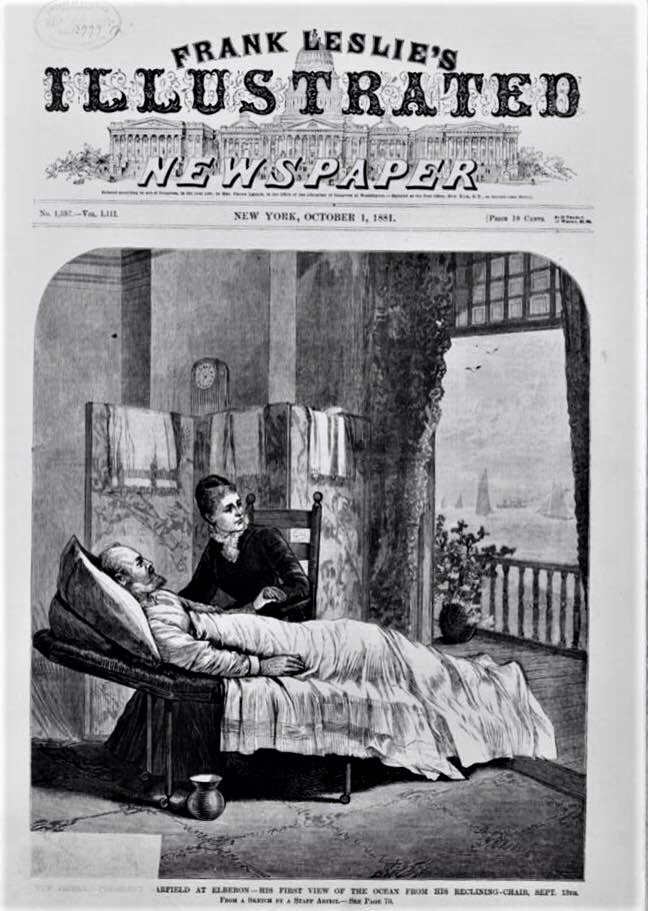
Death of an American President in Long Branch, October 1881. “I want to go down by the sea” was the wounded and dying president’s request for Long Branch.
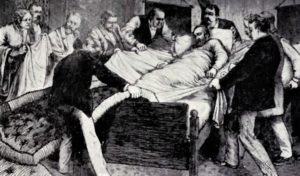
Trying — President Garfield’s has his bedding changed in Elberon, September 1881. He lasted just 16 days at the shore.
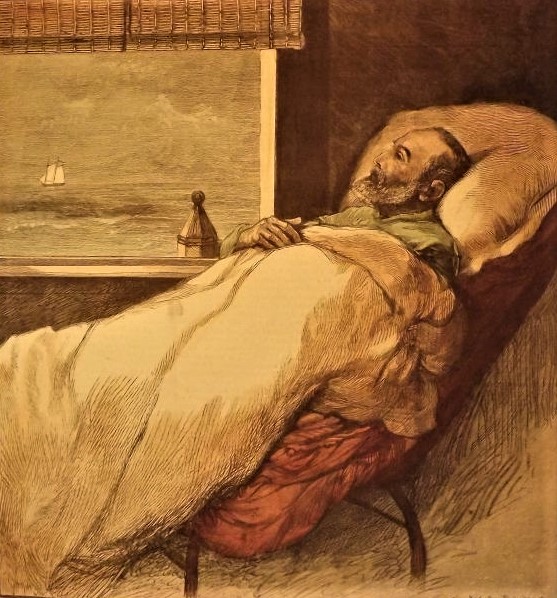
Death by Bacteria — Artist depiction of President Garfield’s last looks at the sea from his Long Branch cottage, Harper’s Weekly, September 1881. It’s likely the president’s own doctors killed him — health historians believe that the constant poking and probing of his wound with septic fingers and instruments made the president’s infection worse and his recovery impossible.
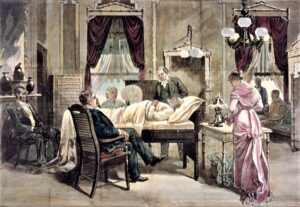
President Garfield’s sick room at the Francklyn cottage, Sept. 1881. Read: “The Dirty, Painful Death of President James A. Garfield” — HERE
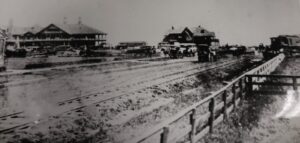
President Garfield’s house (r) with railroad leading the way, 1880s, The massive Elberon Hotel is at left.
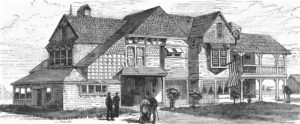
President Garfield’s cottage, 1881. Known as the Charles Francklyn cottage — his family also owned the Cunard Line.
President Abraham Lincoln
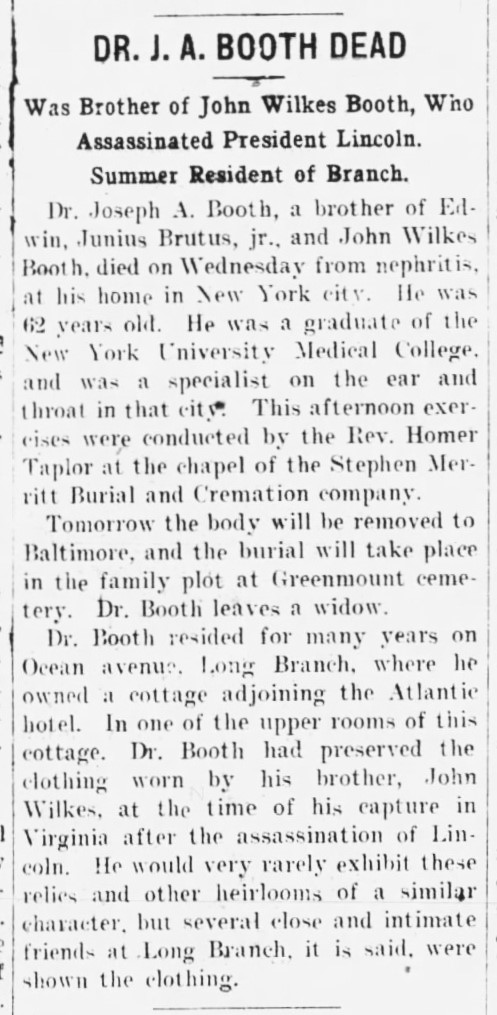
Odd obit for Dr. Joseph A. Booth, brother of the 1865 presidential assassin, Asbury Park Press, February 1902.
President William McKinley
President William McKinley (l) and Vice President Garret Hobart in Long Branch, 1899.
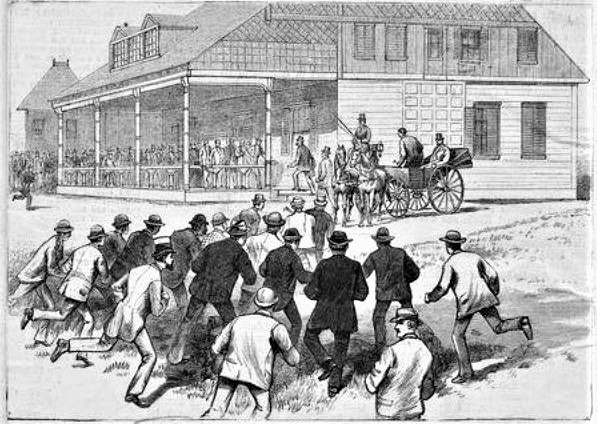
President Chester A. Arthur arrives at the Elberon Station on Sept. 20, 1881 to pay his respects to the late President Garfield and family. Authur had been a Elberon homeowner since 1874. His son, Chester, Jr., sold the family’s Park Avenue mansion in April 1897.
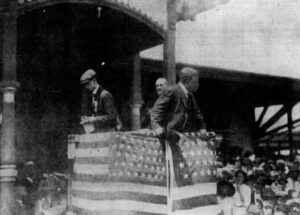
Whistle-Stop Speech — Former President Theodore Roosevelt at Branchport train station, May 1912. Long Branch Mayor Bryant Newcomb (l) introduced him. TR was campaigning for the 1912 Republican Party nomination for US President. He won the NJ primary that month but lost the nomination to his hand-picked successor and incumbent President William H. Taft. Despite the loss, the 26th president still ran for an unprecedented third-term on the Progressive Party ticket (or “Bull Moose Party”) that year. Both presidents were defeated that November 1912 by Democrat Woodrow Wilson (then serving as NJ’s governor). Wilson’s victory came with just 41% of the vote — nationally and in NJ too. TR had easily carried NJ in ’00 (as VP) and ’04 (as President). TR died in January 1919.
Church of the Presidents
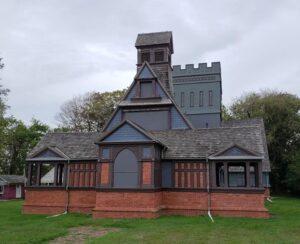
Church of the Presidents, 2020. All seven American presidents who visited Long Branch also worshiped here.
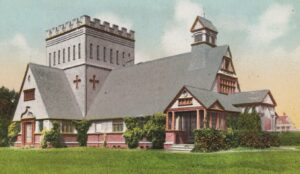
Church of the Presidents, early 1900s. Designed by Potter & Robertson — the New York architects were responsible for many of the grand homes in Elberon.
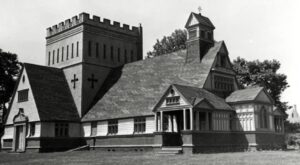
Church of the Presidents, 1940s. The “Westminster Abby of the United States” –Long Branch Daily Record, April 1061
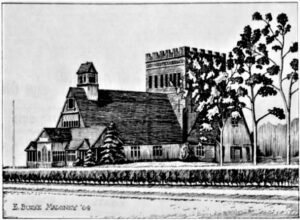
Church of the Presidents sketch, 1964. The brick building was saved from a wrecker’s ball in 1999 by the Long Branch Historical Museum membership. The group was organized in 1952 and Edgar Dinkelspiel was its first chairman.
